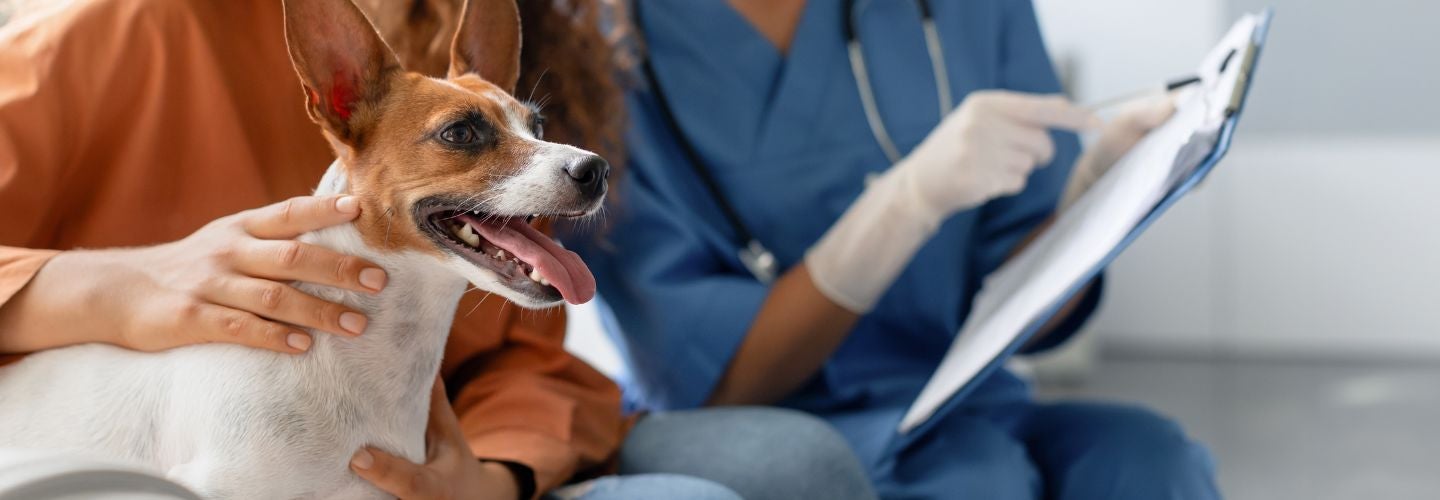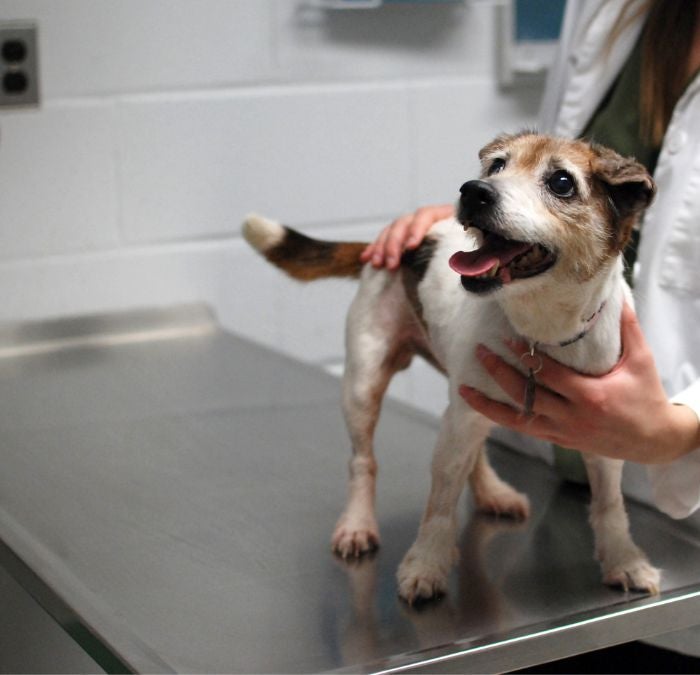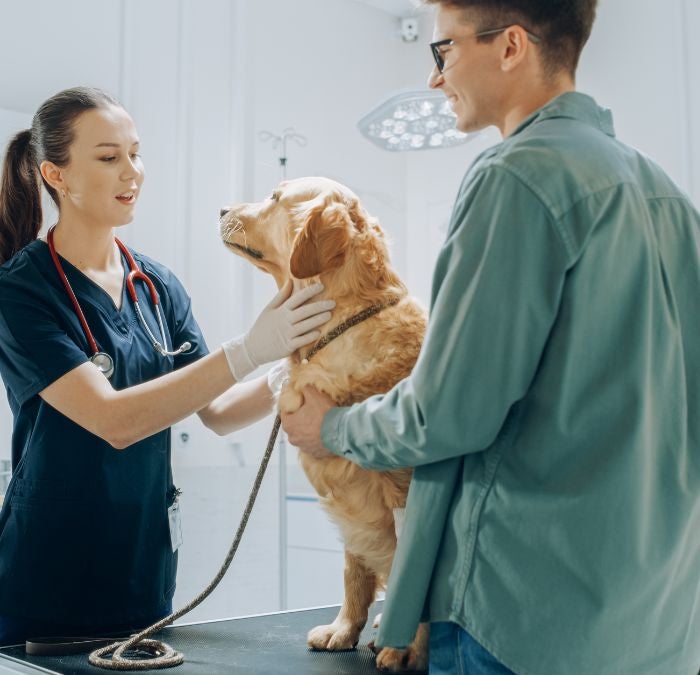
Appointments
This valuable information will help you understand what to expect for your visit.
Before scheduling your appointment, we recommend that you or your veterinarian review our policies and procedures. This ensures that you are fully informed about what to expect during your upcoming visit and helps us provide you with the best possible care for your pet.
For Scheduled Appointments
- Visiting hours are from 10 AM until 6 PM daily and are limited to 15 minutes in duration.
- During normal business hours, a parking attendant will meet you at the entrance of Penn Vet’s parking lot and direct you to a designated parking spot.
- You may enter the building with your pet to register with our front desk team.
- Once registration is complete, a veterinary student or nurse will greet you and escort you to an exam room to collect a history for your pet.
- Your pet will then be examined by a clinician and your clinician will discuss findings, diagnostic decisions, and treatment options.
- Once you have spoken to your clinician for discharge, you can continue to the front desk for check out.
- Curbside care is an option at the client’s request. If you prefer to remain outside the hospital, please notify our parking attendants when you arrive, and they will alert the front desk. You may remain in your car or outside, and the medical care team will contact you by phone to collect a history and discuss your pets’ medical needs.
Medical Records
To provide the best care, we require your pet’s health history. Please ensure we have access to your pet’s records from the past year, focusing on blood-work, imaging, or pathology results, along with their vaccination history. Ask your veterinarian to send any recent records, such as x-rays, ultrasound, CT scans, or MRI results to the email below. If these cannot be emailed, please bring them either on a disk or as physical film radiographs to your appointment.
Contact Medical records
Phone: (215) 898-5558
Fax: (215) 573-3925
Email: phlmedicalrecords@vet.upenn.edu
If you need referral information, contact this office.
Financial Policies
There will be an exam fee associated with your visit. Treatments, diagnostic tests, and medication are additional, and payment is due upon discharge.
If your pet is admitted to the hospital for hospitalization, an estimate will be provided and 50% of the estimated cost is required at admission as a deposit.
The remaining balance will be collected when you pick up your pet. We accept Care Credit but do not offer other payment plans.
What to Expect at Your Appointment
Penn Vet practices a team-based approach and takes great pride in training the next generation of veterinarians and veterinary specialists.
Your pet’s care team supervised by board-certified specialists or a senior attending will also include veterinary nurses, students, residents, interns, and support staff.

- Prior to your consultation, we will review the records from your pet’s primary veterinarian.
- During normal business hours, a parking attendant will meet you at the entrance of Penn Vet’s parking lot and direct you to a designated parking spot.
- Enter the building with your pet to register with our front desk team.
- Curbside care is an option at your request. If you prefer to remain outside the hospital, notify our parking attendants when you arrive. You may remain in your car or outside, and the medical care team will contact you by phone to collect a history and discuss your pets’ medical needs.
- A veterinary student will take a detailed history and physical of your pet.
- This information will be presented to the veterinary team, including house officers (residents and/or interns) and senior attending veterinarians, a process which may take 15 to 30 minutes.
- The veterinary team will return to the exam room with the student, and may repeat parts or all of the history and physical exam.
- We will make specific treatment recommendations for your pet and provide information on potential treatment side effects, prognosis, and cost. We try to discuss all treatment alternatives so that you can make an informed decision on what will work best for your pet and your family.
- There is no pressure to make a decision on the day of your appointment. Many families take information home and consider all of the options before electing to start treatment. We are always happy to answer questions that you may think of after your appointment.
- Please prepare for a lengthy visit. Thorough workups take time, and complicated cases can be here for the duration of the day.
- We may also recommend additional diagnostic testing such as blood work, ultrasound, or advanced imaging. Every effort is made to obtain diagnostic testing within 48 hours but scheduling and emergencies may make same-day diagnostics difficult.
Following your appointment, your pet will either be admitted to the hospital for continued care or discharged to go home, with further care and monitoring instructions provided. All recheck appointments should be scheduled by calling the appointment desk at (215) 746-8387.
For Emergency Appointments
During regular business hours, a parking attendant will meet you at the entrance of Penn Vet’s parking lot and direct you to the traffic circle in front of Ryan Hospital.
Medications and Food
In preparation of your appointment please bring a list of the following:
- Your pet’s medications, including medication name, frequency, size of tablet (mg) for solid medications, or concentration (mg/ml) and the volume (mls) for liquids.
- What food your pet eats, and how much each day, including brand names.
- Any supplements you are giving your pet.
- A list of any allergies; history of reaction to medications or vaccines; or known problems with sedation or anesthesia.
Please fast your pet before their initial consultation appointment in case any imaging or sedation is needed, which means no food after 10:00 PM the night before their visit; water is fine.
Check with us if your pet requires any medications with food in the morning, is diabetic, or has any other special health instructions. Fasting is not required if you have an appointment with Behavior Medicine, Ophthalmology, or Primary Care.
Pharmacy Information
After your appointment, if your pet(s) needs additional medication reach out to our pharmacy.
*Pharmacy services are restricted to current clients who have a prescription authorized by a PennVet clinician.
Penn Vet Client Rights & Responsibilities
At Matthew J. Ryan Veterinary Hospital, we believe in working collaboratively with you, your veterinarian, and our team to provide the best care for your pet. Communication, respect, and trust are critical in achieving this goal together.
- Prompt and courteous replies to any concerns that you raise regarding the quality of care or service that you receive.
- Considerate, respectful, and compassionate care from our veterinarians, staff members, and students.
- Excellence in care from your veterinary team. At our academic teaching hospital, students, interns and residents who participate in caring for patients have close oversight from supervising clinicians.
- Accurate, clear, and timely information regarding your pet’s health.
- Understand your pet’s diagnosis, prognosis, treatment alternatives, and the risks and benefits of each alternative.
- Understand the costs associated with evaluation and treatment options, including payment options.
- Participate in decisions about your pet’s care so that you may accept or decline care.
- Information on clinical trials to determine if your pet meets criteria for inclusion.
- Clarification and understanding if communication is not clear.
- Confidential treatment plans, discussions, and medical records for your pet. We also assure you that photos of your pet will never be posted on public/social networking sites without your definitive permission.
- Treat every member of our team with respect and courtesy when communicating your needs and concerns.
- Disclose relevant, accurate, and complete information about your pet’s health and history, including behavior issues that may impact safety.
- Ask for clarification when you do not understand medical terms or instructions about your pet’s treatment plan.
- Read and understand consent forms prior to signing.
- Accept financial obligations associated with the care of your pet and abide by our payment policies.
- Adhere to the safety rules and regulations while onsite at the hospital.
- Observe the guidelines of our visitation policies.
- Minimize injuries and spread of disease by limiting your pet’s interactions with other animals. All dogs must be on leashes, and all cats must be in carriers.
- Advise our team if you have concerns or are dissatisfied in any way.
Please Note: The Matthew J. Ryan Veterinary Hospital will not tolerate abusive behavior from clients, including failure to comply with safety measures. Abusive behavior can result in denial of service and law enforcement intervention.
Cancellation Policy
Our goal is to provide the best care to our patients in a timely and compassionate manner, and appointments are in high demand. If you must cancel, please do so with at least 24 hrs. notice to allow another patient to have access to the appointment. Failure to notify us in advance can result in cancellation fees and restrictions on future appointment bookings.

Ryan Veterinary Hospital
Emergencies:
(215) 746-8911
By Appointment:
(215) 746-8387
